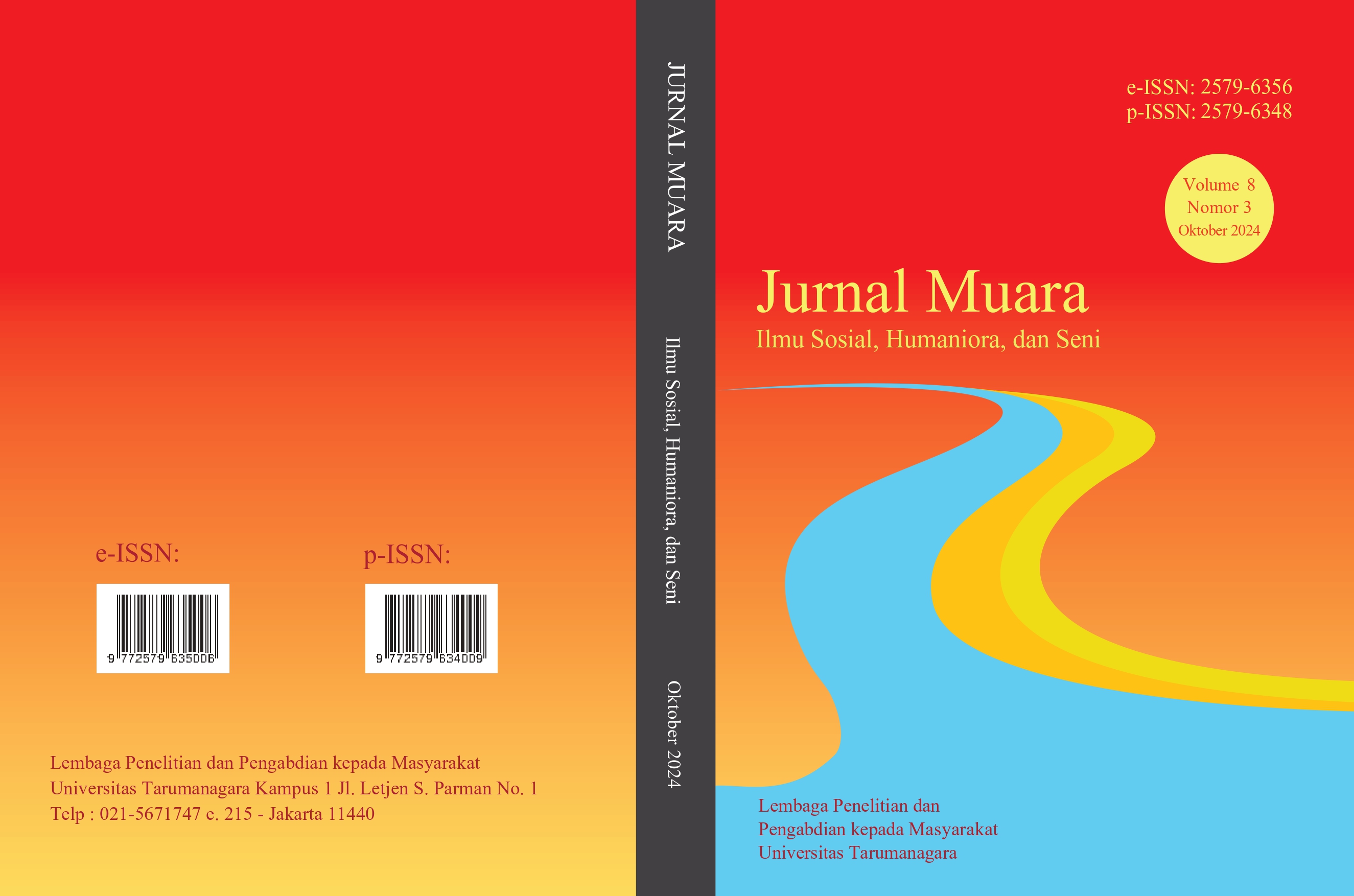MANFAAT EMOSIONAL PROGRAM PEMBELAJARAN MULTIPLE INTELLIGENCES
Main Article Content
Abstract
Banyak penelitian yang mengonfirmasi manfaat Multiple Intelligence (MI) dan Emotional Intelligences (EI) terhadap keberhasilan akademis. Penelitian ini menyelidiki apakah program pembelajaran MI yang menggunakan delapan domain kecerdasan Gardner dapat meningkatkan kecerdasan emosional (EI), yang diukur dengan kuesioner Traits Emotional Intelligence oleh Petrides. Penelitian ini melibatkan intervensi kuasi-eksperimental dengan sembilan belas siswa sekolah menengah, tiga di antaranya siswa inklusi, dari dua sekolah alternatif di Jakarta. Peserta dibagi menjadi kelompok Intervensi dan kelompok Kontrol, dengan tes pra dan pasca yang dilakukan. Intervensi difokuskan pada pembelajaran yang dipersonalisasi dan relevan berdasarkan kekuatan, minat, dan kecenderungan siswa. Data dianalisis menggunakan metode kuantitatif, menggunakan uji beda t-test dan N-gain. Program pembelajaran MI secara statistik gagal meningkatkan EI pada peserta, namun, sebagian besar peserta dalam kelompok Intervensi menunjukkan peningkatan skor EI pasca-tes, yang menunjukkan potensi manfaatnya jangka panjang.
Article Details

This work is licensed under a Creative Commons Attribution-NonCommercial-ShareAlike 4.0 International License.
This work is licensed under a Jurnal Muara Ilmu Sosial, Humaniora, dan Seni Creative Commons Attribution-ShareAlike 4.0 International License.References
Armstrong, T. (1993). 7 kinds of smart. A Blume Book.
Aleksić, V., & Politis, D. (2023). Trait emotional intelligence and multiple intelligences as predictors of academic success in Serbian and Greek IT students. International Journal of Cognitive Research in Science, Engineering and Education (IJCRSEE), 11(2), 173–185. https://doi.org/10.23947/2334-8496-2023-11-2-173-185
Ashouri, A., Jamil, L., Alimoradi, H., & Aghedi, M. (2019). Psychometric properties of Farsi version of Trait Emotional Intelligence Questionnaire-Adolescent Short Form. Iranian Journal of Psychiatry and Behavioral Sciences, 13(4), e94601. https://doi.org/10.5812/ijpbs.94601
Aydin, H. (2019). The effect of multiple intelligence(s) on academic success: A systematic review and meta-analysis. EURASIA Journal of Mathematics, Science and Technology Education. http://www.ejmste.com
Bay, S., & Lim, K. M. (2006). Correlations of multiple intelligences and emotional intelligence: A closer analysis of theoretical assumptions. The Korean Journal of Thinking & Problem Solving, 16(1), 53-64. https://www.researchgate.net/publication/332344496
Bouffard-Bouchard, T., Parent, S., & Larivée, S. (1991). Influence of self-efficacy on self-regulation and performance among junior and senior high-school age students. International Journal of Behavioral Development, 14(2), 153–164. https://doi.org/10.1177/016502549101400203
Davis, K., Christodoulou, J., Seider, S., & Gardner, H. (2011). The theory of multiple intelligences. https://www.researchgate.net/publication/317388610
DeAngelis, T. (2003, February 1). Why we overestimate our competence. Monitor on Psychology, 34(2). https://www.apa.org/monitor/feb03/overestimate
Doménech, P., Tur-Porcar, A. M., & Mestre-Escrivá, V. (2024). Emotion regulation and self-efficacy: The mediating role of emotional stability and extraversion in adolescence. Behavioral Sciences, 14(3), 206. https://doi.org/10.3390/bs14030206
Gardner, H. (1983). Frames of mind: The theory of multiple intelligences. Basic Books.
Gardner, H. (1993). Multiple intelligences: The theory in practice. Basic Books.
Goleman, D. (1996). Emotional intelligence: Why it can matter more than IQ. Bantam Books.
Ghaznavi, N., Haddad Narafshan, M., & Tajadini, M. (2021). The implementation of a multiple intelligences teaching approach: Classroom engagement and physically disabled learners. Cogent Psychology, 8(1). https://doi.org/10.1080/23311908.2021.1880258
Kaur, N. (2014). Influence of MI inspired teaching on EQ enhancement of children. International Journal of Advanced Research, 3(1), 16-22. https://www.researchgate.net/publication/332344496
Latar belakang kurikulum Merdeka – Merdeka mengajar. (n.d.). https://pusatinformasi.guru.kemdikbud.go.id/hc/en-us/articles/6824331505561-Latar-Belakang-Kurikulum-Merdeka
Lubis, S., Sahrani, R., & Heng, P. (2022). Peran kecerdasan emosi dan efikasi diri dalam keputusan karir terhadap kesulitan pengambilan keputusan karir siswa. Jurnal Harkat Media Komunikasi Gender, 16(1), 77-88.
Luszczynska, A., & Schwarzer, R. (2020). Changing behavior using social cognitive theory. In M. S. Hagger, L. D. Cameron, K. Hamilton, N. Hankonen, & T. Lintunen (Eds.), The handbook of behavior change (pp. 32–45). Cambridge University Press. https://doi.org/10.1017/9781108677318.003
Metrotvnews.com. (2023, July 29). Ganjar sebut sekolah di Indonesia buat siswa stres. https://www.metrotvnews.com
Petrides, K. V., Sangareau, Y., Furnham, A., & Frederickson, N. (2006). Trait emotional intelligence and children’s peer relations at school. Social Development, 15, 537-547.
Petrides, K. V., Pita, R., & Kokkinaki, F. (2007). The location of trait emotional intelligence in personality factor space. British Journal of Psychology, 98(Pt 2), 273–289. https://doi.org/10.1348/000712606x120618
Petrides, K. V. (2009). Psychometric properties of the trait emotional intelligence questionnaire (TEIQue). In J. Parker, D. Saklofske, & C. Stough (Eds.), Assessing Emotional Intelligence (pp. 85-101). Springer. https://doi.org/10.1007/978-0-387-88370-0_5
Petrides, K. V., Mikolajczak, M., Mavroveli, S., Sanchez-Ruiz, M. J., Furnham, A., & Pérez-González, J. C. (2016). Developments in trait emotional intelligence research. Emotion Review, 8(4), 335-341. https://doi.org/10.1177/1754073916650493
Salovey, P., & Mayer, J. D. (1989). Emotional intelligence. Imagination, Cognition, and Personality, 9(3), 185–211. https://doi.org/10.2190/dugg-p24e-52wk-6cdg
Shearer, B., & Karanian, J. (2017). The neuroscience of intelligence: Empirical support for the theory of multiple intelligences?. Trends in Neuroscience and Education, 6, 10-25. https://doi.org/10.1016/j.tine.2017.02.002
Singh, A. (2023). Re: What is the minimum sample size for a quasi experiment https://www.researchgate.net/post/What_is_the_minimum_sample_size_for_a_quasi_experment/64a65b1158b01225060dc7fb/citation/download
Tiatri, S., Keni, K., Rasji, R., Idulfilastri, R., Solikhah, N., Dewi, F., & Jap, T. (2022). Perspektif dosen, mahasiswa, tendik mengenai implementasi merdeka belajar kampus merdeka di Universitas Tarumanagara. Jurnal Muara Ilmu Sosial, Humaniora, dan Seni, 6(1), 225-242. https://doi.org/10.24912/jmishumsen.v6i1.16072
Tirri, K., & Nokelainen, P. (2011). Measuring multiple intelligences and moral sensitivities in education. Sense Publishers.
Tyng, C. M., Amin, H. U., Saad, M. N. M., & Malik, A. S. (2017). The influences of emotion on learning and memory. Frontiers in Psychology, 8, 1454. https://doi.org/10.3389/fpsyg.2017.01454
UNICEF. (n.d.). Adolescent education and skills. https://www.unicef.org/education/skills-development
Yu, J., Huang, C., He, T., & Li, C. (2022). Investigating students’ emotional self-efficacy profiles and their relations to self-regulation, motivation, and academic performance in online learning contexts: A person-centered approach. Educational Technology & Society, 25(4), 11715-11740. https://doi.org/10.1007/s10639-022-11099-0
Nusaibah, Z. A. (2020). The role of emotional intelligence in adolescent development. In Proceedings of the 5th ASEAN Conference on Psychology, Counselling, and Humanities (ACPCH 2019) (pp. 277-280).



